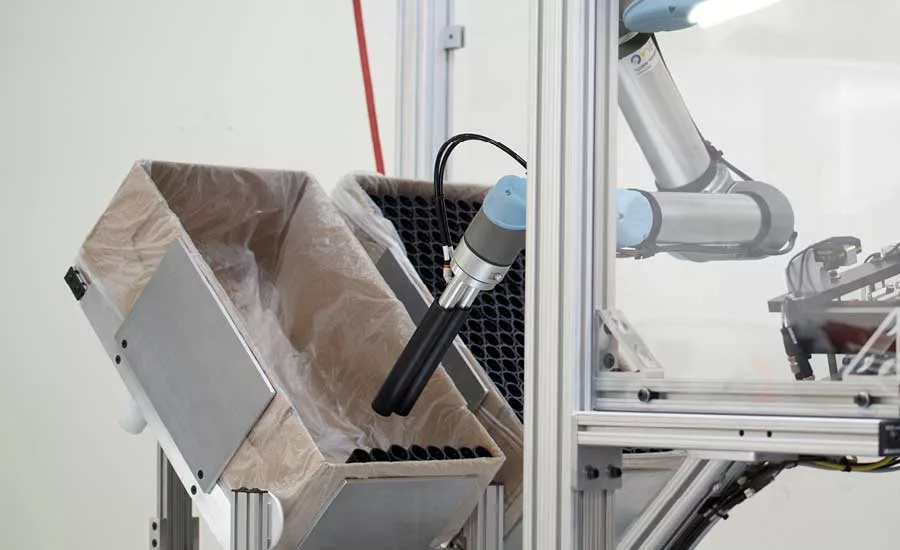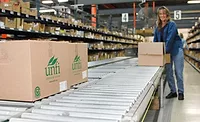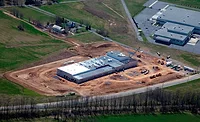Building a future food factory, Part 4: Automation
Food and beverage plants are increasingly employing more advanced automation, which can affect operations at a future facility.

Universal Robots is a robotics company that owns a 60 percent share of the collaborative robots, or cobot, market. They have deployed more than 16,000 UR cobots worldwide. Source: Universal Robots.
We have been taking a look at what really matters when picking a location for a new food or beverage plant. In the previous parts of this series, which is based on the Food Automation & Manufacturing Conference 2017 presentation by Karl Linck, vice president of engineering for Sargento Foods, we considered the aspects of land, locale and logistics. This edition will discuss the top trend in the food and beverage processing industry—automation, and how this is affecting site selection decisions.
With more plants becoming more automated, this is having tremendous ramifications on the labor needed to run the advanced equipment and machinery. In the past, Linck says, people worked on the paradigm that if robotics and automation was installed in a plant, then this would have a ROI in less than three years. This was to improve the cost of good manufacturing (COGM) and profitability.
See more articles in this series:
“The paradigm today is, ‘I’m going to supplement a shrinking manufacturing workforce and redeploy people to tasks where people are critical,’” says Linck.
Automated palletizing systems in a plant can reduce the operation’s workforce by around 70 people, Linck says. But those 70 people likely didn’t really want to do that job, due to its monotony and its high rate of injury from handling pallets and repeatedly bending over. And a company does not have to lay those people off, but can redeploy them into a new production line.
This changes the way automation, in terms of labor, can be viewed; that it is not replacing people, but is freeing up people. However, the financial departments at some companies have to also change how they account for this when putting the payback numbers into perspective.
Traditionally, robots have been seen as things that take away jobs from people. But there is a different viewpoint, and one that is becoming more popular.
“Robots create company growth and create better jobs,” says Linck. “Most of the jobs that robots can do I don’t know a lot of people that want to do them. It’s heavy lifting, high-speed repetitive tasks, and really, we need those people to do other things.”
Also, the field of robotics is changing from having robots work in isolation and well-protected, walled-off areas with fences and laser safety gates. The new products from robotics companies are collaborative robots, or co-bots. With this technology, people and robots can work side by side.
“Co-bots are generally not heavy lifting or high-speed robots,” he says. “If I step into its space or bump it, it’ll stop. So, it has intelligence to help protect people.”
Data from the three big robotics makers—Fanuc, Yaskawa and ABB—shows in 2015 there were an estimated one million robots that have been installed in US plants.
So how does this affect the assessments of an available employee base? The traditional way was to look at employment rates for a given area and go to a place where there is labor. But in today’s world, these rates really don’t show if an area has the type of workers with the skills needed.
“Because you need a different skill level, you may have a workforce that is not completely trainable or maybe you can’t get them to work,” Linck says. “So you have to be able to evaluate this.”
Another tactic might be to retrain a percentage of the existing workers. However, this can be very costly to do.
“The other part is to think about where all your robots live,” Linck advises. “In Sheboygan, Wisconsin, right now 400-plus robots are working in different factories and 95 percent of them are Fanuc. So, guess what? If I’m putting in automation, I’m going to put in Fanuc.”
That’s because the tech schools located around the area have small Fanuc robots to train students. But in other areas of the state, Linck says they use mostly ABB robots, so the automation decision in those areas would likely be ABB.
Some communities are signaling that they want to bring hi-tech food and beverage processing facilities to their areas by entering and completing a site certification program, such as one offered by Austin Consulting.
Frank Spano, managing director of Austin Consulting, says having a certified food site can benefit communities as well as food and beverage companies.
“It effectively positions the community to attract quality food and beverage processors to a specific site with all data available for a company to review,” says Spano.
In the next part of this series, we will go over how to obtain people with the right skills.
Looking for a reprint of this article?
From high-res PDFs to custom plaques, order your copy today!






